Related Research Articles

The Keeper or Master of the Rolls and Records of the Chancery of England, known as the Master of the Rolls, is the President of the Civil Division of the Court of Appeal of England and Wales and Head of Civil Justice. As a judge, the Master of the Rolls is second in seniority in England and Wales only to the Lord Chief Justice. The position dates from at least 1286, although it is believed that the office probably existed earlier than that.

Sarah Emily Davies was an English feminist who founded Girton College, Cambridge. She campaigned as a suffragist and for women's rights to university education. In her early life, she attended meetings of the National Association for the Promotion of Social Science and befriended Barbara Bodichon and Elizabeth Garrett Anderson. After moving to London with her mother in 1862, she wrote for and edited the English Woman's Journal and joined the Langham Place Group. She co-founded the London Schoolmistresses' Association and the Kensington Society, which pressured for universal suffrage, although she herself believed only unmarried women and widows should gain the vote.
The Victoria Press was a printing press started by Emily Faithfull, along with other feminist activists, in London, on March 26, 1860. The press, named after Queen Victoria, was created as a way to allow more women into the printing field. In 1867 management of the press was given by Faithfull to William Wilfred Head, a partner in the press. Head continued to print pieces advocating for the employment of women until 1882, even after buying Faithfull out in 1869.
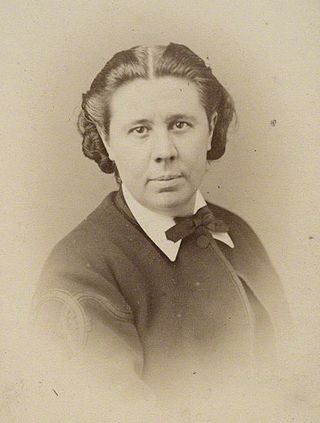
Emily Faithfull was an English women's rights activist who set up the Victoria Press to publish the English Woman's Journal.

Barbara Leigh Smith Bodichon was an English educationalist and artist, and a leading mid-19th-century feminist and women's rights activist. She published her influential Brief Summary of the Laws of England concerning Women in 1854 and the English Woman's Journal in 1858. Bodichon co-founded Girton College, Cambridge (1869). Her brother was the Arctic explorer Benjamin Leigh Smith.

The British Critic: A New Review was a quarterly publication, established in 1793 as a conservative and high-church review journal riding the tide of British reaction against the French Revolution. The headquarters was in London. The journal ended publication in 1843.

(Emilia) Jessie Boucherett was an English campaigner for women's rights.
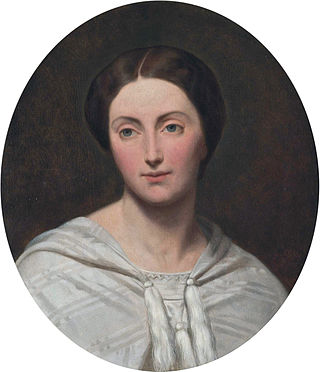
Anna Maria Helena, comtesse de Noailles was an English noblewoman who used her wealth and influence to support the reform of women's rights.

Elizabeth Rayner Belloc was one of the most prominent English feminists and campaigners for women's rights in Victorian times and also a poet, essayist and journalist.
The Society for Promoting the Employment of Women (SPEW) was one of the earliest British women's organisations.
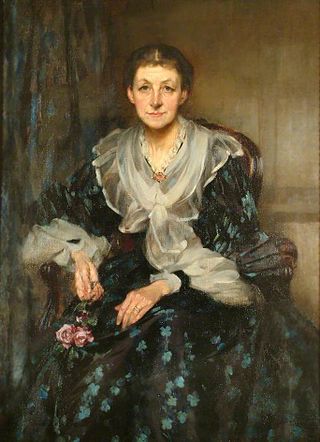
Matilda Ellen Bishop was the first Principal of Royal Holloway College, University of London and was responsible for establishing many of the early traditions at the institution. Her father was a scholarly Church of England clergyman.
Ann Charlotte Bartholomew (1800–1862), was an English flower and miniature painter, and author.
The Langham Place group was a women's club founded in England in 1858, including Helen Blackburn, a women's rights advocate who later served as editor of The Englishwoman's Review. The group was named after the address, 19 Langham Place, which was for a decade from the late 1850s also the office of the English Woman's Journal.
Lady Maria Bell was an English amateur painter and sculptor.

Lilian Mary Faithfull CBE was an English teacher, headmistress, women's rights advocate, magistrate, social worker, and humanitarian. She was one of the "Steamboat ladies" who were part of the struggle for women to gain university education.

Matilda Mary Hays was a 19th-century English writer, journalist and part-time actress. With Eliza Ashurst, Hays translated several of George Sand's works into English. She co-founded the English Woman's Journal. Her love interests included the actress Charlotte Cushman, with whom she had a 10-year relationship, and the poet Adelaide Anne Procter.
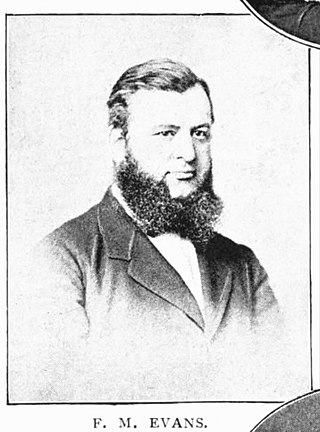
Frederick Mullett Evans (1803–1870) was an English printer and publisher. He is known for his work as a partner from 1830 in Bradbury & Evans, who printed the works of a number of major novelists, as well as leading periodicals.
Theodosia Monson, Baroness Monson of Burton(néeBlacker; 23 July 1803, in Warkworth, Northumberland – 3 July 1891, in Malvern Wells, Worcestershire) was a promoter of women's rights, horsewoman, atheist and landscape painter. According to Sharon Marcus, she was the last companion of Matilda Hays.

Austin Holyoake was a printer, publisher, and freethinker. The younger brother and partner of the more widely known George Jacob Holyoake, Austin Holyoake was himself a significant figure in nineteenth century secularism.
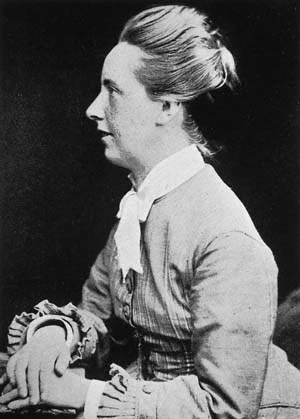
Emily Sturge was a British campaigner for women's education. She was secretary of the west of England branch of the National Society for Women's Suffrage.
References
- 1 2 3 4 Hilary Fraser; Judith Johnson; Stephanie Green (2003). Gender and the Victorian Periodical. Cambridge University Press. ISBN 0521830729.
- ↑ Merrill, Lisa. "Hays, Matilda Mary". Oxford Dictionary of National Biography (online ed.). Oxford University Press. doi:10.1093/ref:odnb/57829.(Subscription or UK public library membership required.)
- ↑ Hirsch, Pam. "Bodichon, Barbara Leigh Smith". Oxford Dictionary of National Biography (online ed.). Oxford University Press. doi:10.1093/ref:odnb/2755.(Subscription or UK public library membership required.)
- ↑ Elizabeth Crawford (2001). Women's Suffrage Movement: A Reference Guide, 1866-1928. Taylor & Francis Group. p. 142. ISBN 978-0-415-23926-4 . Retrieved 8 December 2012.
- ↑ Delamont, Sara. "Davies, Emily". Oxford Dictionary of National Biography (online ed.). Oxford University Press. doi:10.1093/ref:odnb/32741.(Subscription or UK public library membership required.)
- ↑ English Woman’s Journal (1858-1864)
- ↑ "NCSE: About us". ncse.ac.uk. Retrieved 14 February 2019.
- ↑ Felicity Hunt. "Oxford Dictionary of National Biography". Oxford Dictionary of National Biography (online ed.). Oxford University Press. doi:10.1093/ref:odnb/37409.(Subscription or UK public library membership required.)
- ↑ Gerry Holloway (2005). Women And Work In Britain Since 1840 . London: Routledge. p. 216. ISBN 0415259118.
- ↑ "Explore Two Centuries of Independent Feminist Press". Google Arts ad Culture. Retrieved 6 June 2020.